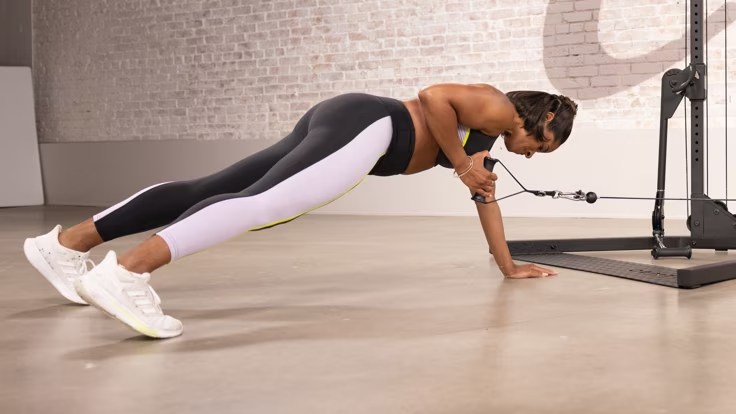When we talk about weight loss, it’s often accompanied by a variety of mixed emotions and confusion. Some people try to lose weight quickly through extreme dieting, while others go crazy and engage in high-intensity exercise. The result is often physical and mental exhaustion, or even worse rebound.
Today, I want to share with you a simple and practical truth about weight loss: don’t fight yourself, eating less and moving more is the best way to lose weight!
01 Don’t be hard on yourself
Losing weight is a long-term battle, not a quick one. In order to lose weight quickly, many people often adopt extreme weight loss methods, such as eating only fruits and vegetables, skipping staple foods, or spending all day in the gym. While these methods may give you some results in the short term, they often have a negative impact on your body and mind in the long term.
First of all, extreme dieting can cause the body to lack necessary nutrients and affect the body’s normal metabolism and immunity. In the long run, you may feel tired, prone to illness, or even suffer from hair loss, loose skin and other problems. In addition, excessive dieting may lead to a vicious cycle of overeating, making your weight loss journey even more difficult.
Secondly, although high-intensity exercise can help you burn a lot of calories, if you do not arrange your exercise plan properly or exceed your physical limits, it can easily lead to sports injuries and excessive fatigue. This will not only affect your weight loss results, but may also make you fearful and resistant to exercise.
Therefore, what I want to tell you is: Don’t be hard on yourself! Losing weight is a process that requires patience and persistence. We need to find a sustainable way to lose weight that suits us. This requires us to grasp the truth of eating less and moving more.
02 Eat less and move more is the truth
picture
Eating less and moving more is the basic principle of weight loss, and it is also the simplest and most practical way to lose weight. “Eat less” here does not refer to extreme dieting, but to reasonable control of diet and intake of appropriate calories and nutrients. “Hyperactivity” refers to increasing the amount of physical activity and consuming excess calories through exercise.
Reasonable control of diet
Properly controlling your diet is the first step to losing weight. We need to develop a reasonable diet plan based on our physical condition and weight loss goals. First, make sure you consume enough nutrients such as protein, carbohydrates and fats to meet the body’s normal needs. Secondly, control overall caloric intake and avoid excessive intake of high-calorie foods and snacks. Finally, pay attention to the diversity and balance of your diet, and eat more vegetables, fruits, whole grains and other foods rich in fiber and vitamins.
Specifically, we can adopt a meal-sharing system to control our diet. Divide three meals a day into five or six meals, and consume an appropriate amount of food at each meal to avoid overeating and excessive hunger. At the same time, pay attention to the cooking methods of food, try to choose healthy cooking methods such as steaming, boiling, and baking, and avoid high-oil and high-fat cooking methods such as frying and frying.
Increase physical activity
Increasing physical activity is key to losing weight. We need to consume excess calories through exercise to achieve the purpose of losing weight. However, exercise does not happen overnight. We need to develop a reasonable exercise plan based on our physical condition and athletic ability.
First, we can start with simple exercises, such as walking, jogging, yoga, etc. These exercises not only help us burn calories, but also enhance cardiopulmonary function and muscle strength. As the body gradually adapts, we can gradually increase the intensity and time of exercise and try higher-intensity aerobic exercise and strength training.
In addition, we can burn more calories by increasing the amount of activity in our daily lives. For example, choose to walk or ride a bike instead of driving or taking public transportation; use stairs instead of elevators; walk more in the office, etc. These seemingly insignificant changes can actually help us consume more calories and accelerate the process of weight loss.
03 How to eat less and move more
- Make a plan
Developing a detailed weight loss plan is the first step to practicing eating less and moving more. You can tailor your diet and exercise plan to your own time and preferences, ensuring it’s both consistent with your weight loss goals and easy to follow.
- Find support
Find some like-minded friends or family members to support your weight loss efforts. They can provide you with encouragement, advice and help so you are not alone on your weight loss journey.
- Maintain a positive attitude
Losing weight is a process that requires patience and persistence, and you may encounter setbacks and difficulties. However, as long as you maintain a positive attitude and a firm belief, you will be able to successfully lose weight. Remember: don’t fight yourself!
- Continuous monitoring
Regularly monitoring your weight and body changes is an important part of practicing eating less and moving more. You can weigh yourself once a week, measure your waist circumference and other indicators to evaluate your weight loss results. At the same time, you should also pay attention to your physical condition and feelings, and adjust your diet and exercise plan in a timely manner.
Losing weight is not an easy task, but as long as we master the truth of eating less and moving more and put it into practice, we will be able to lose weight successfully. Let us stop struggling with ourselves and learn to control our diet reasonably, increase our physical activity, and enjoy a healthy and beautiful life!




